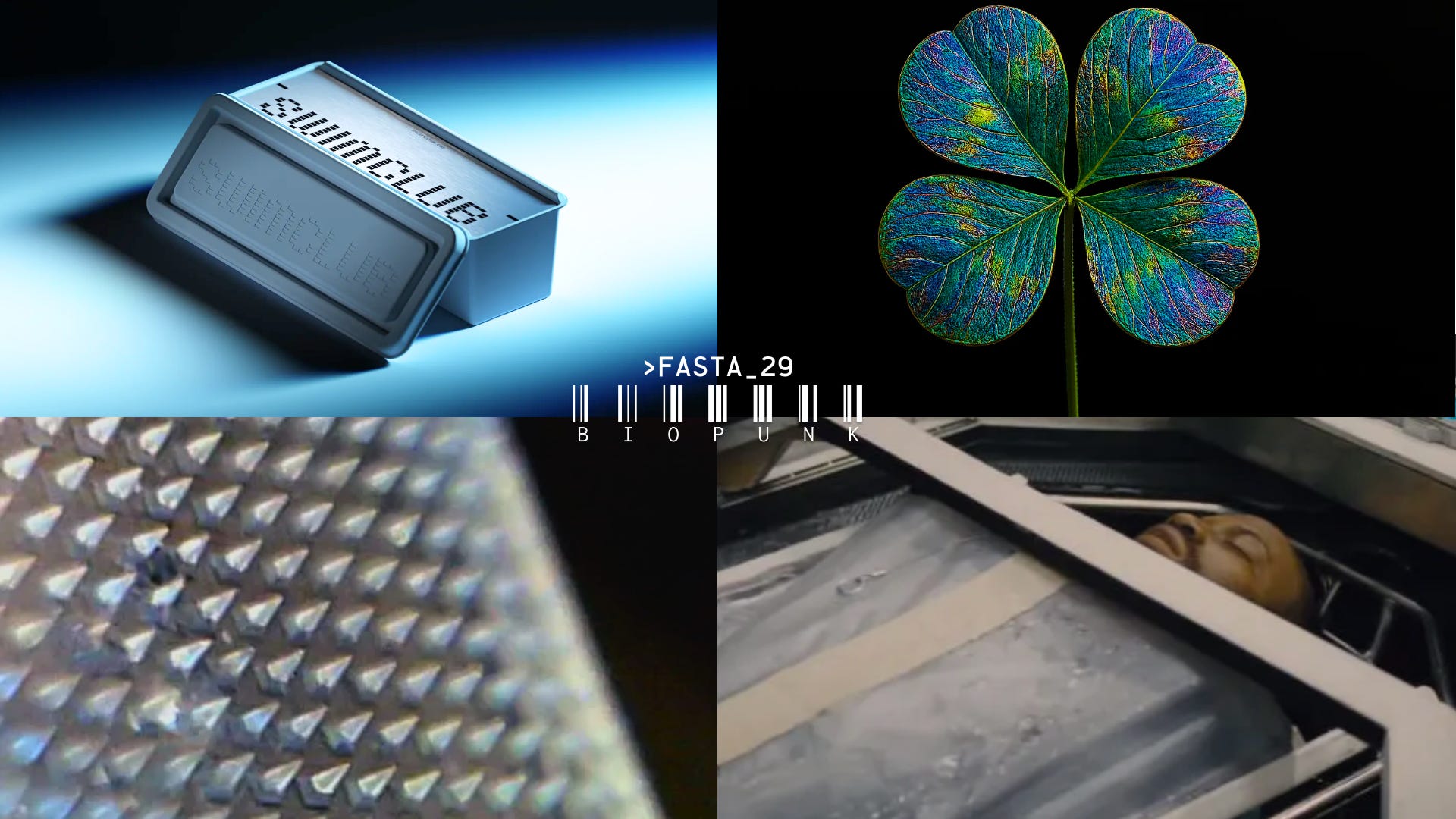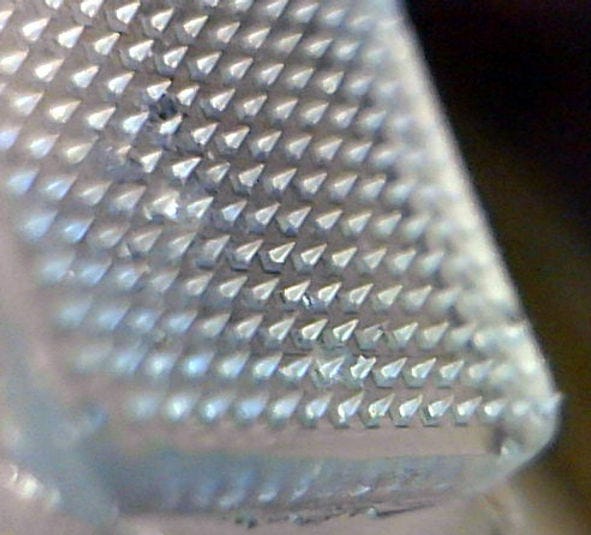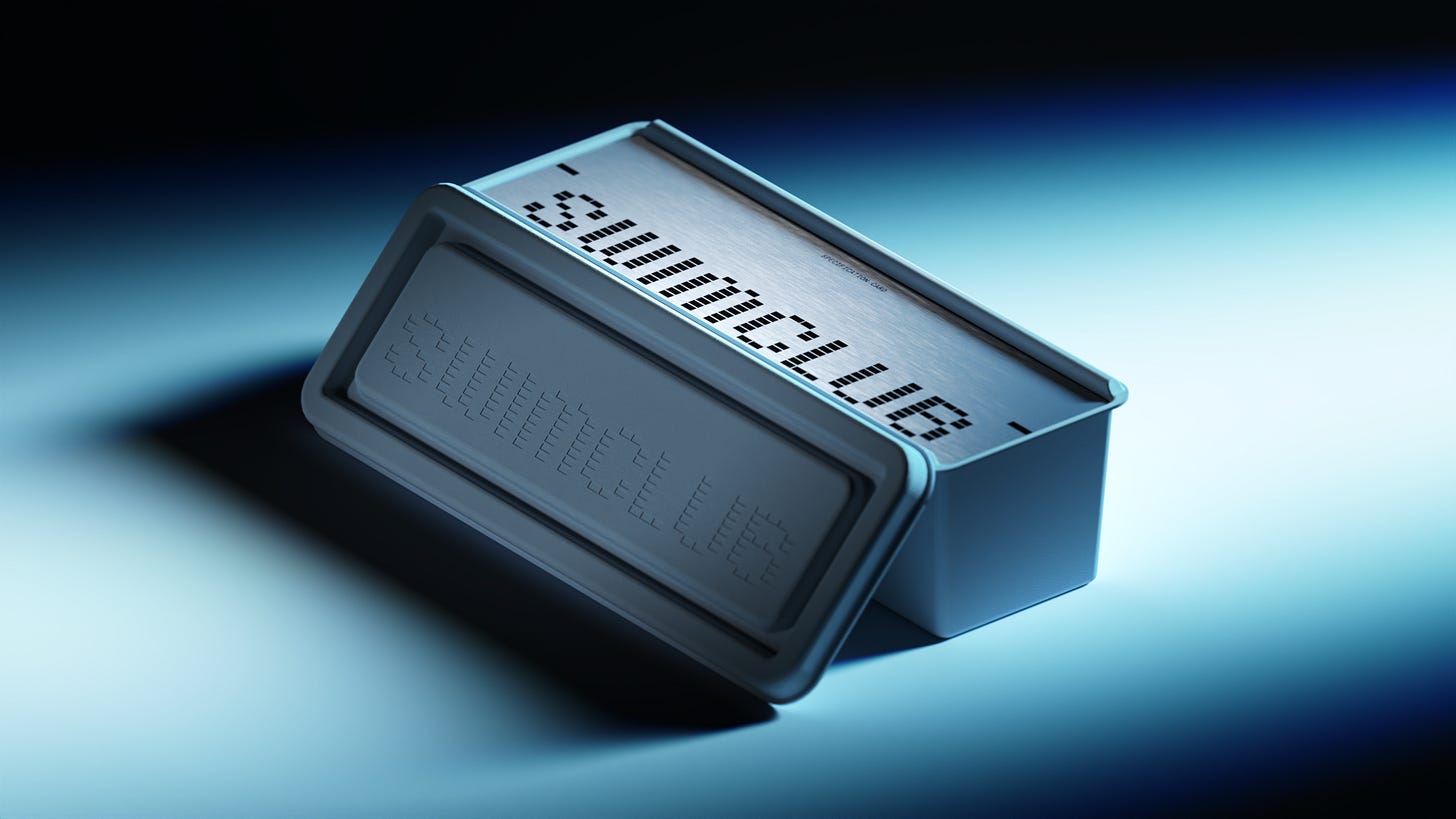>FASTA_29
Vitropep's peptide patches; Swimclub's sperm performance supplement; Lyndra's long-release pills; Arc's bridge recombinases; AlterEgo's telepathy BCI; Renewal Bio stem cell embryos; Genomines' metals
>FASTA: weekly short reads of the global biotech ecosystem | Papers and patents, acquisitions and bankruptcies, biotech philosophy | Read in under 5 min | Follow on LinkedIn, X, YouTube, and Instagram | Versión en Español
Pilgrim is proud to sponsor >FASTA! They’re building the next generation of military medicine for rapid wound healing and pathogen detection—advancing solutions from frontline emergencies to everyday healthcare.
1. Vitropep 🙅♀️ 💉
From weight loss to wound healing applications, peptides are perhaps the hottest biotech these days. Vitropep stabilizes peptides as microneedles that can be administered topically through a painless patch (no more needles!) that carries up to 90% of the API and is stable at room temperature (no cold chain).
Founder Christophe Tarabout, a biophysicist, has proven in vitro and in vivo efficiency for two known commercial peptides used in the IVF process and for bowel diseases. He’s running promising tests for GLP-1 and has filed two patents. The 3-year-old company is part of Genopole and currently fundraising.
2. Swimclub 🩲
Swimclub is the first clinically formulated sperm performance supplement. A combination of vitamin D3, lycopene, spermidine, zinc and 11 other branded ingredients are formulated to target sperm count, motility, morphology, and DNA fragmentation for improved fertility in males who are trying to get pregnant.
While the decline in sperm count is in the zeitgeist, fertility is still more often associated with women, who unlike their counterparts, are expected to take prenatal vitamins as part of the pregnancy or conception efforts. Squared Circles, the venture studio behind swimclub, was challenged with turning Dr. Michael Eisenberg’s science into a desirable brand.
The capsules are made in FDA-registered, cGMP-certified US facilities, and start at $380 for a 90-day subscription, which is recommended as sperm takes at least 72 days to generate.
3. Until, the hibernation company ❄️
A little over a year ago, longevity investor and scientist Laura Deming announced the recovery of electrical activity from cryopreserved rodent neural tissue at Until, her new Interstellar-esque new company. So far, they’ve raised US$100M+ to preserve whole human organs for transplants, and one day, whole bodies.
The very interdisciplinary challenge they’re working to solve is how to protect the tissue when cooling and rewarming. They need to change the temperature fast enough to prevent ice formation, but not too fast so there are no thermal gradients across the whole volume of the tissue.
Instead of moonshot Disney-like tech for billionaires, it seems sensible to target the demand for the thousands of organ transplants which are actually lost each year to logistical delays or lack of a timely match by developing better cryo-tech.
4. Long-release pills 💊
Keep reading with a 7-day free trial
Subscribe to Biopunk to keep reading this post and get 7 days of free access to the full post archives.







